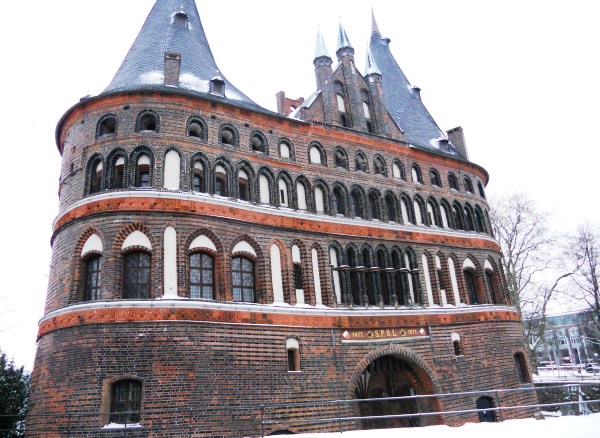
What links the German city of Lübeck, a well-known guidebook and the several of England’s more attractive cities?
Wandering around Lübeck recently I was struck by the way the city has been so comprehensively rebuilt since the end of the war. As with much of central Europe Lübeck was not spared the ravages of war and indeed received special attention by the RAF bombers. The city had been rich in mainly medieval wooden buildings, constructed during its heyday as a trading port, when goods would pass freely between Lübeck and other cities within the Hanseatic League, a commercial alliance that dominated the Baltic for several centuries.
What marks Lübeck out in wartime history is that it was the first significant city that was bombed primarily for its cultural value, rather than for any military objective. The city was not well defended when the British bombers arrived on 28th March 1942, and by the time the aircraft had dropped around 400 tonnes of bombs on the city (including for the first time thousands of incendiary devices) the wooden buildings of Lübeck didn’t stand a chance. One of the city’s most prominent buildings, the Lutheran Marienkirche, received particular punishment and even today you can see signs of the war damage as you walk through the enormous church.
Much of Lübeck was either destroyed or badly damaged and around 300 civilians lost their lives that night. The British would later hone their fire-bombing skills to devastating effect on other German targets.
For the German command the bombing of Lübeck was an outrage and a revenge plan was immediately drawn up to revive flagging morale. If the British had chosen Lübeck because of its pretty buildings, the German would use similar criteria for their attacks. Enter the Baedeker guidebook to Great Britain. The authors of the guide used a star system to categorise the main attractions across the country; the higher the rating the more the destination was a must-see for the adventurous German tourist. The message sent out by the Nazis was that they would go out and “bomb every building in Britain marked with three stars in the Baedeker Guide”.
Within a week at the end of April 1942 first Exeter and then Bath, Norwich and York were attacked in night-time bombing raids. The bombs were aimed at cultural rather than military sites and resulted in over 1,000 fatalities, as well as the loss of several old buildings and artefacts. The attacks would later be known as the Baedeker Raids.
Of course, revenge led to further retaliation and in the following rounds of destruction Cologne and Canterbury were hit, before the demands of the war meant that the Germans needed to deploy their limited resources elsewhere and the tit-for-tat attacks diminished.
Visiting York last week it was striking to see the wartime pictures of the city’s Guildhall ablaze during the raids of April 1942. The photos were strikingly reminiscent of the ones I’d seen a few weeks earlier in Lübeck. There was no direct reference in York or Lübeck to the Baedeker Raids and perhaps this is an opportunity lost; after all, the images of historic buildings in both countries being destroyed is one of the most visually powerful symbols of the pointless destruction caused by war.




